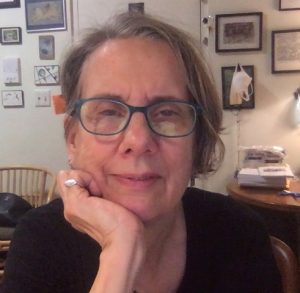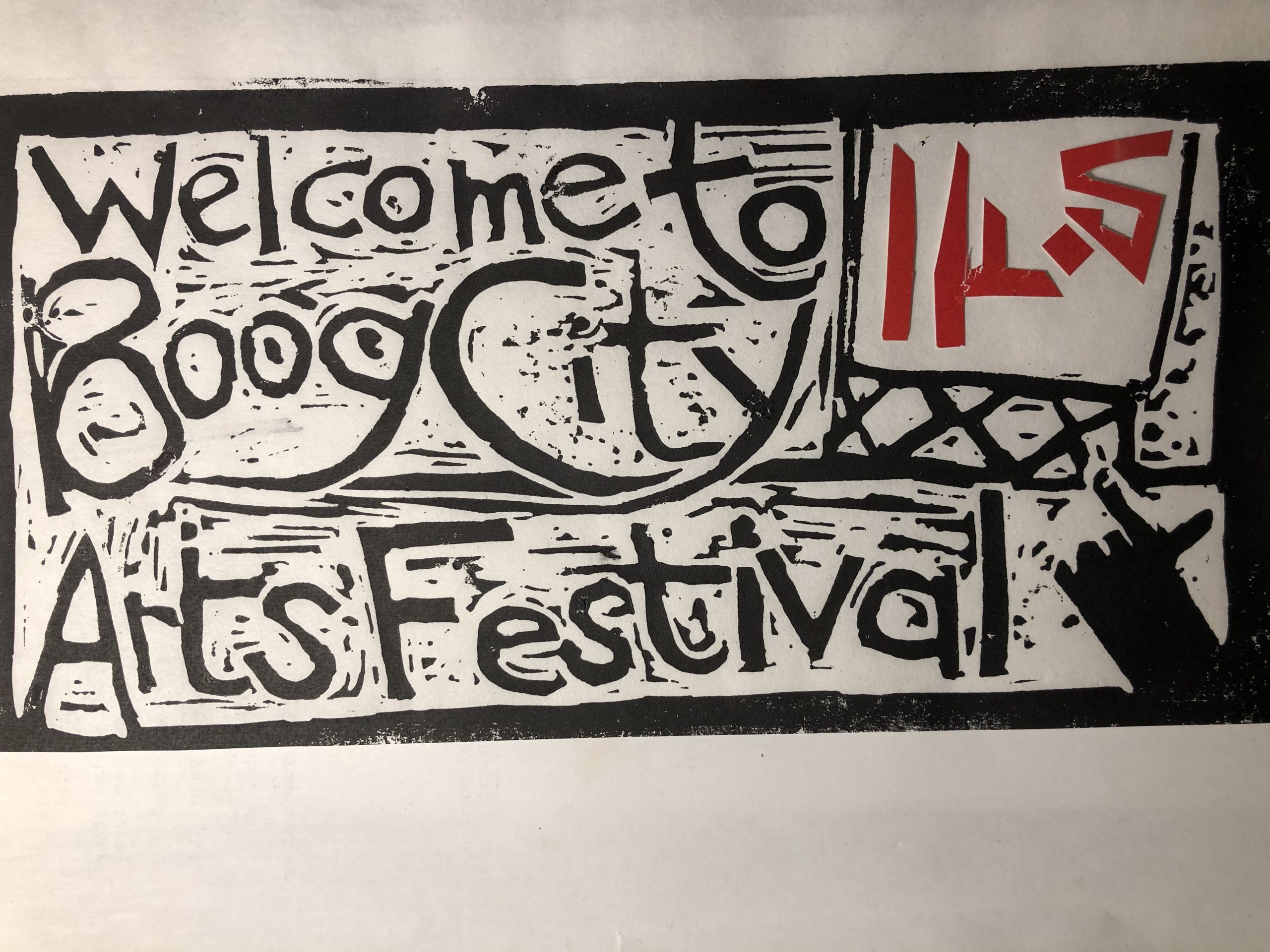by Ryan Nowlin
Digigram
Barbara Henning
United Artists
Consider the following question first: how is a poet’s oeuvre distributed over the months of the year? A lifetime? Take Goethe, for example. His most productive years were at age 25, 33, 40, 48, 58, 65, and 72. His creative phases were short while his fallow periods were long. In contrast, I find that New York School poet Barbara Henning’s tendency towards dispersion of the poem into fiction and back into poetry has helped her to steadily produce an impressive body of work, beginning with her debut poetry collection, Smoking in the Twilight Bar (1988), then Love Makes Thinking Dark (1995), Detective Sentences (2001), My Autobiography, (2007), Cities & Memory (2010), A Swift Passage (2013) and more recently, A Day Like Today (2015), and Digigram (2020). Interspersed between poetry collections were Henning’s novels, Just Like That (2018); Thirty Miles to Rosebud (2009); You, Me and the Insects (2005); and Black Lace (2001).
In A Day Like Today, Henning had the virtue of an overarching theme, the aftermath of a love affair, while her latest book, Digigram, published by United Artists Books, is admonishing and precarious, reacting to the sonic events of the pre-Trump and early Trump period that threatened to destabilize the speaker and the world she inhabited. A desire for a better situation is a feature of this collection. Here the world seems to appear to Henning as phenomena, yet she presents the possibility that the mind has the capacity to construct not only a digigram, but to self-correct when deep structures and unregulated ways of asserting the will to power arise.
 In the introduction to her Prompt Book, an excellent collection of experiments for writing, forthcoming from Spuyten Duyvil, Henning explains how she became interested in writing and teaching poetry. While she was in grad school at Wayne State University, she wrote a series of poems in prose that later became her thesis and then her first book, Smoking in the Twilight Bar (also United Artists Books). Because a friend had a typesetting machine in the back of his copy shop, she volunteered to typeset the book for the publisher, the late Lewis Warsh. She remembers rewriting these poems on that machine. One week she would typeset them in lines, the next week back into prose. In the end, she liked the way paragraphs and sentences could stream in and out of the narrator’s consciousness. Since then, she has written many poems in prose, going back and forth from lines to paragraphs, exploring the difference between line breaks and prose with flowing sentences and paragraphs while leaving a poetic rhythm in the prose and a prosaic flow to the lined poems.
In the introduction to her Prompt Book, an excellent collection of experiments for writing, forthcoming from Spuyten Duyvil, Henning explains how she became interested in writing and teaching poetry. While she was in grad school at Wayne State University, she wrote a series of poems in prose that later became her thesis and then her first book, Smoking in the Twilight Bar (also United Artists Books). Because a friend had a typesetting machine in the back of his copy shop, she volunteered to typeset the book for the publisher, the late Lewis Warsh. She remembers rewriting these poems on that machine. One week she would typeset them in lines, the next week back into prose. In the end, she liked the way paragraphs and sentences could stream in and out of the narrator’s consciousness. Since then, she has written many poems in prose, going back and forth from lines to paragraphs, exploring the difference between line breaks and prose with flowing sentences and paragraphs while leaving a poetic rhythm in the prose and a prosaic flow to the lined poems.
Henning’s latest collection, Digigram, is a gathering of 75 prose poems, sketches of perception and thought, which track her daily life in and around Tompkins Square Park, South Park Slope Brooklyn, and other neighborhoods in New York City, as well as in her hometown of Detroit. As she indicates in a “Process Note,” the impetus for writing these poems began in 2016 when “I picked up a collection of writing and art by the Dadaist, Elsa von Freytag-Lorenhaven, also known as the Baroness. … Reading her poems, I thought to myself – they are like ecliptic telegrams to the world. … I was collecting poetic material from my journals, arranging, rearranging, and collaging in news from the days before and around. Meanwhile I felt desperate—as did many others—about the political situation unfolding in the country.”
Philip Whalen describes his poetry as “a picture of a graph of a mind moving….” Henning’s words and images in these poems form a patchwork of temporality—gleanings of world—images captured in nets of attention. The poem’s loops and vectors are suggestive of someone thinking about experience while living in the local and the wider world. Digigram is an amalgamation of the word digital and what psychoanalysts refer to as a sort of graphing of consciousness, or a “psychogram,” by which one understands a system of character traits of a person. Further, her poetry is more concerned with intervals of rhythm as is evidenced by her pervasive use of the dash. Once we eschew line endings and the diction normally associated with poetry, we still are faced with the problem of representation. What I mean to say is that the words Henning uses to express everyday concerns and the “poetic” are not necessarily incompatible. Every poet/artist, as Jean-Francois Lyotard maintains, must address the question of what art is, and its practice involves an answering to the origin of representation as in this Digigram, entitled “Coprolalia”.
—early morning—fall into a dream—dragonflies buzz around me—and Paul Ryan—smiles—with his widow’s peak—like Dracula—saying—we’re going to privatize— all the prisons—then my sister lends my car—to a guy I’m seeing—you don’t know him—I yell—you should ask first—fucking asshole—now she’s asleep—on the sofa—I feel guilty—for swearing at her—but I do it again— coprolalia—compulsive swearing—can’t help it—fuck it—at dawn—downtown Detroit—fuck it—it’s still dark— and I’m still dreaming—
The alternation of sound and sense can’t always explain the irrepressible dialectic of Digigram, (a subdued sense of the world as it is) but if one translates into reason what might not be available to sense, then one might discover what motivates technical change in the mode of verse that is the stress or lack of stress of a syllable relative to its position in the line as in “Mid Jump”:
in DC never-ending sirens—reds, light greens, blues—Elsa the baroness skips along—a stream of edgy one word lines—one sound—telegrams to the world—
The capture of the desired object is a dispute between lovers and socialized consensus. To make judgments of beauty is to participate in the social arena—beauty socializes. The modernist sensibility is pain. The terrible love object is an analysis of terror as is implied by this segment from Henning’s “So Do I”:
I look for you everywhere—so do I—why did you get married?—he shrugs—the sheer physical toil—required to survive—without electricity—we might have gone on–slightly hungry—you wanted that life—he nods again—then I say I love you—he says, I love you too—then he’s gone—just like that—
I would suggest that a renewed interest in Walter Benjamin’s “thought figures” (or DenkBilder) infuses Henning’s Digigram with a diverse, disconnected, and open-ended picture of urban existence and memory, not only of the narrator’s own past, but also serving to critically illuminate the history of an epoch. For example, in Henning’s “The Moon” a sensory experience is created similar to the fragmentary writing style presented in Benjamin’s Berlin Childhood and One-Way Street, where the moon is now a tangent, not a core, an opacity on someone’s distant horizon. It is as if she were confessing her inability to separate sense experiences from the concepts to which they belong: behind appearances that structure the world there is a mediating agency already organized within these intellectual activities such as writing and reading. Yet in Digigram everything reconverges on this still point of the turning world where one can
—hang a dress—in the lobby—wrong size—for 2016—once twirled around—like a flower—on a highway— soon on a hanger—in some other closet—reading Walter Benjamin—Berlin Childhood—what was and what might be—a shelter—the rhythm of the railway—ringing of a bell—a butterfly hovering—each passing moment—to gaze—to touch—as a child—the moon—out a Berlin window—
The poems contained in Barbara Henning’s Digigram go so far as to even resist the omniscient academic voice that begs to be placed in a privileged position and which constantly places demands upon the reader. Hers is a poetic talent that often fulfills this open challenge to resist poetic closure, a vestige of the New Criticism, which dominated the post-WWII American literary establishment until now. The New Critics regarded the poem as an independent and self-sufficient verbal object, a chamber, sealed off from its attendant circumstances and effects. The meaning of the poetic act and the functions of the poet, which the New Critics prescribed, emphasized “organic unity” of overall structure and verbal meanings. The poet’s individual talent depended upon an ability to respond to past tradition, altering it with new meanings.
New Critics use the word structure interchangeably with “form” and regard it as primarily equilibrium, or an interaction, or an ironic and paradoxical tension, of diverse words and images in an organized totality of “meanings.” T.S. Eliot’s theory of the objective correlative was a way of expressing emotion whereby words, sets of objects, a situation, and a chain of events shall be the formula of that particular emotion. In other words the poem must have scaffolding upon which the aforementioned components of the poem may accrue meaning. Essentially they emphasized that there must be a correlation between image and meaning, but for many artists and writers, these anchoring generalizations and/or intricate aesthetic structures no longer suffice to describe the urban world in which they live.
In response to this sense of “contingency,” New York School poets such as Barbara Henning discard complex symbols interpreting life in favor of actual reenactments of imaginative energies devoted to particular life situations. Henning’s Digigram is rife with the uncommon phrase that can feel revelatory, yet her lines often open up with such alacrity that it is easy to overlook how considered each word is in relation to its subject. So, there is this undisguised reality that she strives to know through the practice of writing poetry that is fused with the application of a colloquial order of things that we use in everyday speech.

RYAN NOWLIN (Myliterarywebsite.com) received his M.A. in creative writing from Temple University in 2004 and MLIS from Rutgers in 2011. His concentration was in post-modern American poetry and 20th century Modernisms. For the past few years he has been an active participant in The Poetry Project at St. Mark’s in-the-Bowery. He currently lives in New Jersey and teaches as an English adjunct at Hudson County Community College in Jersey City. Recently poems of his have appeared in Sal Mimeo, The Delineator, and the online publications Boog City and Across the Margins, as well as the anthology/photography book, Like Musical Instruments: 83 Contemporary American Poets, ed. Larry Fagin and John Sarsgard. Also, he has published two chapbooks, Banquet Settings and Not Far From Here. Kugel is his first full-length collection of poetry. He is at work on another manuscript, Time with the Season.

